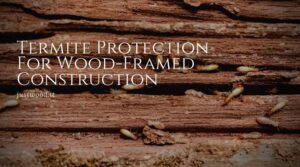Warmth, color, and subtle or dramatic grain patterns are amongst the stunning effects this natural material can bring into your home. Renovating wood can take many forms, from stripping and varnishing floors and internally fitted woodwork to stripping and staining chairs, tables, fittings, polishing surfaces, and coloring.
Wood sometimes requires a facelift but be selective and choose your projects carefully. There is little point in stripping or altering antiques because it will almost certainly reduce their value. Some pieces are often the better for their aged appearance.

Table of Contents
Skill level
Renovating wood is not difficult, but it does require patience and application. Don’t be tempted to work on fine or antique furniture – leave that to the experts!
Safety first
Always wear a face mask when working with an electric sander. Wear protective gloves when using paint stripper or solvents. Work in a well-ventilated atmosphere when stripping or finishing wood. Keep your fingers away from the cutting edges of tools. Keep stains, varnishes, and solvents away from naked flames.
To complete this project, you will need…
- Blow Torch
- Dust mask
- Fungicide
- Hammer
- Handsaw
- Nail Punch
- Paint Stripper
- Plane
- Sanding Pad
- Sandpaper
- Shavehook/Scraper
- Varnish Brush
- Varnish/Sealant
- Wire Wool
- Wood Filler
- Wood Stain
Planning your work
Decide on a method to remove the old finish on the timber (if there is one). For instance, by blow torch, paint stripper, planing, or sandpaper. On large areas, such as floors, you may need to obtain an industrial sander. Remember, you will also have the room out of action for some time.
Structural damage through rot, wear, or accident should be repaired before any overall renovation can begin. These repairs can often be something simple: letting in a small section of the floorboard, patching a window frame, or perhaps filling the hole where a lock has been removed from a door. You may also need to apply a fungicide in poor ventilation areas or where there is evidence of fungal activity.
To avoid handling the wet areas when staining or varnishing a piece of furniture, decide upon a work sequence before starting. Paneling works out where you can finish with your brush strokes so that there is no obvious line when you begin again.
Before proceeding, always test dyes, stains, and varnishes on a small, inconspicuous area of the wood to be treated to assess their suitability. Have your materials to hand, and if working with movable furniture, have a clear and clean area set aside to work in.
If you are working in a large area such as a floor, set yourself a reasonable target. When stripping vertical paneling, try to work from the bottom up when using a blowtorch because the rising heat will pre-soften the paint or varnish above. Work from the top down when re-applying any wet finish.
Initial preparation
Remove any projecting nails, screws, or any other metallic objects which may damage tools. Door and drawer knobs should also be removed. These can be cleaned, renovated, or renewed separately.
Before sanding wooden floors, punch the nails’ heads below the surface to avoid any possible damage to the sander. When using a paint stripper on a piece of furniture on the bench, cover the top of the bench with a cloth or newspaper for protection and possibly the surrounding floor area. When using a blow torch, have at least one spare canister ready to hand for replacement.
Stripping wood
This is the first step in any renovation, and now is the time to fit your face mask. This will help protect against fumes from burning solvents and also from fine sanding dust. Whether you use a blow torch or paint stripper, you will need a shavehook or scraper to remove the old finish.
It may be necessary to use several applications of stripper to get into small crevices, which is often best achieved by rubbing the area with paint stripper on wire wool by hand. A small wire brush (like those used for suede shoes) or a toothbrush can also be useful. It is not advisable to use a blow torch on furniture or areas with deep profiles and crevices to scare the wood.
Wood that has been discolored by age, weathering, or fingermarks can often be brought back to life by taking off a few light shavings with a finely set smoothing plane. You must always work with the grain of the wood to avoid tearing it out.
After you have stripped the timber, it must be prepared for finishing by sanding, either by hand or with an orbital sander. When hand sanding, it’s useful to wrap the sandpaper around a cork block. This helps to create a flat surface and protects the user’s fingers.
Orbital sanders come in various sizes and are used for finishing larger areas. Some are also designed to reach into tiny spaces. These are called detail sanders. One good way of getting a smooth surface is to rub along the grain with wire wool. Be sure to vacuum the wood’s surface afterward, or wipe it with a dry rag, to remove any tiny wire particles picked up by a wet paintbrush and spoil the finish.
Most stripped surfaces need to be neutralized with water or white spirit. Be sure to do this, and remember to let the surfaces dry thoroughly before attempting to use sandpaper on them.
Before applying finishes
All finishes, even clear ones such as polyurethane varnish or wax polish, will darken the wood’s appearance to some extent. Bear this in mind, especially when trying to match wood tones. Bleach will lighten the wood. All woods, except for pine, tend to get lighter when exposed to daylight. Pine will get progressively darker even if it has been treated with varnish or polish.
The ‘end grain’ of wood will always absorb more stain, varnish, or polish than the other surfaces to show up darker. The end grain must be sanded well before applying stain or varnish. Use a sanding sealer or give it only one light application, even if the rest of the piece takes several coats. After the first coat is dry on the end grain, you can wipe wax polish along it to prevent it from absorbing any more surface finish.
The first application of any stain, sealer, or varnish may raise the wood’s grain and give it a slightly rough feel. When the first application is perfectly dry, give all surfaces a light rub over with fine sandpaper following the grain, then re-apply the finish.
Wood fillers
Small nail holes or gaps in joints can be filled with one of the many available wood fillers. These often come in colors to suit various woods, and most will accept stains and dyes.
Wood fillers can fill fairly deep holes by building up layers successively after the previous one has dried. However, they should not be used for large areas. These need additional wood ‘let in’ to the damaged area after the rotted or damaged area has been cut away, leaving only good wood. The total replacement may be necessary if the damage is very severe.
Staining
This must be done before any varnishing or waxing takes place.
If you wish to color your wood, there are many stains and dyes you can use. Most of these will allow the grain’s beauty to show through the finish, and you can adjust the depth of color by adding additional coats. Remember, you cannot lighten the effect with subsequent applications, only darken it, so experiment first! Remember also that this will darken the finish still further when you apply the varnish or wax afterward.
It is essential when applying stains and varnishes to brush in the direction of the grain. It would be best if you also kept a ‘wet edge’ and never let a part of the stain dry before returning to it. For this reason, always work out an area you can treat in the drying time of the stain or have an edge where you can finish easily, such as a floorboard.
Protective finishes
There are dozens of products for the protection and enhancement of wood, and one of the most popular clear varnishes for indoor use is polyurethane. This will bring colors to life and enhance the grain formation, giving it a vibrant glow. Polyurethane is available in gloss, satin, or matt finishes. It is not suitable for outdoor use. In that case, a yacht varnish or similar preparation is preferable. It may be necessary to apply several coats for maximum effect, and each coat should be rubbed down with fine sandpaper when completely dry and before the next coat is applied. Remember, too, that the finish will darken slightly, even though this is classed as a clear varnish.
Some timbers used outdoors, such as cedar or teak, have special preparations or oils manufactured for their treatment, and these are applied by brush after the timbers have been sanded down and prepared.
Clear grain sealer can be used for indoor projects, followed by several applications of wax polish. This will give a lovely ‘body’ to the finish, which will improve over the years by applying more wax with each polishing. Remember that you must sand your wood to a fine finish for the best results.





